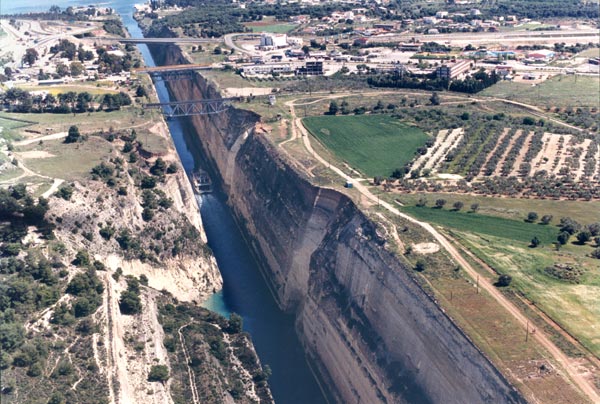With the UK General Election rapidly approaching, I thought I’d share my thoughts on the new “We Are The Reality Party”1, led by former Happy Mondays and Black Grape member, Mark “Bez” Berry. The fledgling party, founded in 2014, has candidates in Salford1 and Kent2. Party leader, Bez, is a breath of fresh air in politics. Born in Bolton in 1964, he gained fame as a dancer and percussionist, and now resides in a suburb of Manchester. Despite his background in the rock ‘n’ roll world, he’s an ordinary working class guy who’s been making a modest income, mainly through DJing. Incredibly down to earth, Bez is a football fan, and his hobbies include beekeeping3 and brewing his own beer4. He is also a proud patron of the homeless charity, Coffee4Craig5. The ‘Reality Party seeks to improve the welfare of the nation through true democracy.
So grab yourself a cuppa and read on to find out more about this refreshing new party, and discover why it could be just what Britain needs…

Summary of ‘Reality Party Policies
The ‘Reality Party has some compelling manifesto1. Here’s a summary of its position on key issues:
Nationalisation, Energy & Corporate Taxation
It wants to protect national bodies like the NHS and the police from privatisation, and even renationalise services such as energy and transport. The party is against fracking and would invest in the National Grid as well as renewable energy programmes. Taxation policy would be revised so that corporate taxes would be fairer, injecting cash back into the economy by putting an end to avoidance loopholes.

Housing & Education
The ‘Reality Party would revolutionise the country’s approach to new housing. Building would be on Brownfield sites and properties would have guaranteed rents over a twenty-year investment payback period, after which, ownership would pass to the nation. Non-profit Community Land Trusts would be government-backed so that the model could be more widely utilised. A decade-long education plan would be implemented to improve standards and phase out tuition fees, with inter-generational and community orientated additions to the curriculum.
EU Membership, Political Structure & Participatory Democracy
The party’s stance on the EU recognises the benefits it offers, but is open to leaving if policies are introduced that would be detrimental to the UK. Regarding political structure, the party seeks to eradicate corruption in the government and would implement legislation so that serious punishments would apply. MP pay packages and expenses would be revised in order to attract the best candidates from all backgrounds. True democracy is an underlying principle of the party, and participation of the whole of the general population would be encouraged through consultations, referendums and additional voting methods to make contributing to decision making easy for everyone.

Delving Deeper
There’s no doubt that some of the ‘Reality Party’s policies could be considered pretty radical. But it could also be argued that it is ambitious plans like these that are needed in order to positively revolutionise the way the country is run. Policies such as those of the ‘Reality Party have the potential to raise the standard of living and create a more economically successful nation, whilst strengthening democracy, communities and the environment. Two of the ‘Reality Party’s most significant commitments would be to nationalisation and housing. Here we will examine the advantages, disadvantages, feasibility and impact that these could have.
Nationalisation
The party’s ambitions of nationalisation would be a huge undertaking, but there’s proof that it’s an achievable task. Most of the country’s key industries and utilities were nationalised after the Second World War under the leadership of Clement Attlee and the Labour party6. Workers benefited from higher wages, reduced hours and improvements in safety, while the industries became more efficient and profitable6. However, in the 1980s and 1990s, many essential services were again privatised under the Conservative rule of Margaret Thatcher, starting with telecommunications, and progressing to include energy and the railways7.
Nationalisation protects the population from exploitation of monopoly power. For example, government-run energy and water prevents inflated prices and ensures the needy are provided with these basic necessities. Government-run public transport enables focus on positive externalities. That is, things that benefit the economic infrastructure, such as reduced congestion and pollution.
The centralised planning and coordination of industries and utilities results in increased efficiency and a positive impact on the economy. Nationalisation also enables large-scale investment and long-term improvement, which is more difficult for smaller enterprises to accomplish. Nationalised banks can obtain funding more quickly and for larger amounts, allowing financial infrastructure to be rebuilt, as well as more rigorous regulation.
Post-war nationalisation has already taught important lessons for success. Methods must be introduced for allowing significant input from workers into the running of their industries. Consistent and diligent management is required by the government in order to maintain efficiency. Safeguards need to be enforced to prevent taxpayer-funded subsidies or bailouts being utilised in the case of losses attributed to inefficient management. Budget must be stringently planned so that all nationalised departments receive adequate funding for long-term improvements and modernisation. By sticking to these principles, potential issues can easily be avoided and the full benefits of nationalisation can be realised.
Housing
The country’s requirement for housing supply is deemed to be 250,000 new homes per year8. This figure would prevent spiralling house prices and a shortage of affordable homes. Despite this target, it has been missed for a decade, and even hit a post-war low in 2012-13 as a result of the recession. The UK has limited land resources. With a total area of around 244,000 square kilometres, or 94,000 square miles, there has been frequent political debate over the years on the relaxing of laws protecting the country’s Green Belt, also known as Greenfield land.
Greenfield sites are rural areas of open countryside or farmland that have never been built on before. They are rarely returned to green space once they have been built on. Therefore, it is vital to protect Greenfield sites to preserve land that is environmentally significant or agriculturally productive.

Brownfield sites are derelict or disused areas situated within urban regions. Land on these sites is cheap but may require demolition, and on some former industrial sites, the removal of contamination. Building on Brownfield land rejuvenates urban areas and makes use of existing utility connections and municipal infrastructure. A study commissioned in 2014 found that current Brownfield sites can accommodate a minimum of almost a million new homes, and this does not take into account any land that will become Brownfield in the future9.

Community Land Trusts10 provide a method of new housing development that can utilise Brownfield sites, and this is one of the approaches that is backed by the ‘Reality Party. These non-profit organisations enable development by local communities. Volunteers undertake the work themselves and the community retains ownership of the freehold to ensure the continued sustainability of the affordable housing created.
Other approaches that do not affect Greenfield land include schemes like Liverpool city council’s initiative called “Homes for £1”11. Launched in 2013, the pilot saw twenty derelict houses sold to local, employed first-time buyers who promised to renovate the properties to an acceptable standard within a year of purchase, and remain in the homes for five years. The pilot was viewed by many as successful, with the first buyer’s renovations nearing completion in December 201412. However, it is estimated that £35-40,000 is required to fully refurbish each house, which has proved difficult for many of the new homeowners to achieve.
A similar scheme in Stoke-on-Trent saw thirty-five derelict properties revived, and quicker occupancy times than in Liverpool13. This was due to the council offering the new householders renovation loans of £30,000 each, repayable over ten years. The council also utilised its own contractors to keep costs down for the new residents.
Innovative initiatives like these, combined with new construction on Brownfield sites, could enable the country to meet its housing targets on an ongoing basis whilst protecting the Green Belt. While all the major parties have expressed a desire to prioritise Brownfield development, policies are considered by some to be weak or a little hazy, with Labour failing to make any mention of it in its manifesto14.
Current Political Representation
With such ambitious policies, you might be wondering why we should support a new party that has such a different approach to politics than we have experienced before. To find out why we absolutely should, let’s have a look at some of the concerns we, or our fellow-voters, are faced with.
Many Britons feel disaffected about the current government and those parties and candidates standing for office. In the wake of the recent recession, austerity cuts meant some of the hardest hit seemed to be the most vulnerable members of society. The “spare bedroom tax”, introduced in 2013, is said to have negatively affected hundreds of thousands of low-income households15. Also in 2013, there was scandal following the leak of an internal Jobcentre email that revealed the government had introduced league tables and targets for benefits sanctions16. Policies and incidents like these have left many disappointed with the current Coalition government, and despondent with the available choices at election.
As such, by supporting a political organisation like the ‘Reality Party, it will be able to grow and gain influence in Parliament. In subsequent General Elections, it will be in a strong position to lead the government, which could have an incredibly positive impact on our country, reinstating true democracy and revitalising the political system.
Our current political representation is dominated by the Conservatives, Labour, the Liberal Democrats and, more recently, UKIP. While each of the major parties of course has its own manifesto, there doesn’t seem to be a great deal of difference between them, and it is often hard to see how they are representative of their constituents. Let’s examine why this is by having a look at the backgrounds and demographics of some of the most prominent leaders and parties competing in the forthcoming election:
Education
Current Prime Minister, David Cameron, studied at independent preparatory school, Heatherdown, before continuing his secondary education at Eton College. He later obtained a BA in Philosophy, Politics and Economics at the University of Oxford. Coalition partner, Liberal Democrat leader and Deputy Prime Minister, Nick Clegg, was educated at two independent schools before studying for a degree in Archaeology and Anthropology at Cambridge University. Their Labour nemesis, Ed Miliband, is unusual in that he was schooled in ordinary primary and comprehensive establishments. After completing his ‘A’-Levels, he, like Cameron, read Philosophy, Politics and Economics at Oxford University. UKIP leader, Nigel Farage, attended the public school, Dulwich College. Farage chose not to continue his education at university and instead started work in the City in commodity trading.

There is nothing wrong with the educational backgrounds of these successful political figures – on the contrary, in fact. But the point here is that only seven per cent of the UK’s population has been privately educated, yet thirty-three per cent of the current Parliament attended public school17. As such, it is difficult to imagine how the government, whilst being academically able, can suitably understand and represent the general population. The statistic is also indicative of Britain’s elitism and lack of social mobility that means there are a disproportionate number of privately educated people in the top-earning professions, including the political roles of MPs and Lords18.
Ethnic Minorities
In August 2014, the Guardian reported on the failed representation of ethnic minorities in politics19. At present, eight million Brits, or fourteen per cent of the population, belong to an ethnic minority20. Ethnic minorities represent 8.6 per cent of Conservative constituents, whereas there are only 3.6 per cent black or minority ethnic (BME) MPs19. 19.3 per cent of Labour constituents are BME, while there are 6.2 per cent BME MPs19. Finally, there are 11.4 per cent BME Liberal Democrat constituents and no BME MPs19. Whilst in all areas of employment people should be chosen because of their overall suitability and not to meet a statistical target, in a field such as politics, having a fair representation of the ethnic backgrounds in a constituency is of particular importance.
How do we Make Change a Reality?
It is no wonder that many of us are unsure how it is possible – or even if it is possible – to instigate significant positive change via the political system. By having a quick look at the pitfalls of Britain’s voting system, we will see that while change is no easy feat, voters can influence the future leadership of our country:
The UK’s “first-past-the-post” voting system encourages tactical voting. This means that people frequently vote for one of the two candidates they think will win so as not to have a “wasted” vote. Under this system, people often vote for a candidate they dislike less than another, even if they prefer a different candidate altogether. The prospect of potentially having to vote against a party, or for a candidate one disagrees with, results in a lesser voter turnout than with other voting systems. “First-past-the-post” means the media holds a lot of power, as it provides assertions on who the leading contenders are likely to be. Votes count more depending on the constituency, and the system inevitably ends up with two perpetually dominant parties over time, which means only a minimum level of democracy is provided21.

As UK citizens, we are able to exercise our right to vote and have a say in the political leadership of our country by electing local MPs who we feel will positively represent the needs of our communities. It takes courage to vote for who we truly want in power, but if everyone does so, it will really shake up the political system and show the major parties what we actually want.
Although in the forthcoming General Election of 2015, only residents of the Salford and Eccles, Worsley and Eccles South and South Thanet constituencies have the opportunity to vote for We Are The Reality Party candidates (Mark “Bez” Berry, Mags McNally and Nigel Askew respectively), I urge you to support the party this time around and in the future. By “support” I mean anything from following them on Twitter or Facebook1 to becoming actively involved in politics – everyone’s support at every level is incredibly valuable.
If you share the beliefs of the ‘Reality Party, why not consider representing it in your local area and making a massive difference to your community by becoming an MP? If that’s not really up your street, just raise awareness by telling your family and friends about it. Whatever you can do to support this fresh face in politics will make a huge – and positive – difference to our country, encouraging a fairer and truly democratic approach to government. After all, this is surely what everyone wants in order to secure a brighter future for ourselves and our loved ones.
It’s up to you and me to make change a reality, so come on, let’s give it a go!

I’m a freelance writer, so if you need content and you like this post, contact me.
© 2015 Ruth Hayward – This material may not be copied in whole or in part without the prior written consent of the author. Please contact the author here to request permission to duplicate.
References & Further Reading
1 We Are The Reality Party, Manifesto
http://www.realitypartysalford.co.uk/
Twitter, @Reality_Party
https://twitter.com/Reality_Party
Facebook, The Reality Party
https://www.facebook.com/realitypartyuk
2 We Are The Reality Party, East Kent
http://www.eastkentrealityparty.co.uk/
3 The Independent, A far cry from the Happy Mondays: Bez backs urban beekeeping scheme, Pat Hurst, 27th August 2013
http://www.independent.co.uk/news/people/news/a-far-cry-from-the-happy-mondays-bez-backs-urban-beekeeping-scheme-8786240.html
NME, Happy Mondays’ Bez buzzing about urban bee campaign: ‘I’m a full-time honey monster’, 28th August 2013
http://www.nme.com/news/happy-mondays/72312
4 Express, Bez to create honey beer range, 12th September 2013
http://www.express.co.uk/news/showbiz/428933/Bez-to-create-honey-beer-range
BeerSpotters, Ranges
http://www.beerspotters.co.uk/ranges/
BeerSpotters, Bez’s Buzzeee Honey Beer
http://www.beerspotters.co.uk/product-category/beers/on-it/
5 Coffee4Craig
http://coffee4craig.com/home/4579861362
6 Wikipedia, Clement Attlee: Nationalisation
http://en.wikipedia.org/wiki/Clement_Attlee#Nationalisation
7 The Guardian, A short history of privatisation in the UK: 1979-2012, Richard Seymour, 29th March 2012
http://www.theguardian.com/commentisfree/2012/mar/29/short-history-of-privatisation
8 BBC News, Why can’t the UK build 240,000 houses a year?, Tom de Castella, 13th January 2015
9 New Start, How much brownfield land is available for housing?, Paul Miner, 29th January 2015
http://newstartmag.co.uk/your-blogs/much-brownfield-land-available-housing/
10 National Community Land Trust Network
http://www.communitylandtrusts.org.uk/home
11 The Telegraph, Pound land: Derelict houses in Liverpool to be sold for just £1, 19th February 2013
http://www.telegraph.co.uk/finance/economics/9879456/Pound-land-Derelict-houses-in-Liverpool-to-be-sold-for-just-1.html
RT, ‘Homes for £1’: Liverpool launches scheme to lure tenants into derelict houses, 9th October 2013
http://rt.com/business/liverpool-one-pound-houses-949/
12 Liverpool Echo, Liverpool’s £1 house – See inside Toxteth’s first renovated four-bedroom family home, Joshua Taylor, 10th December 2014
http://www.liverpoolecho.co.uk/news/liverpool-news/liverpools-1-house–see-8265820
13 The Guardian, Houses for a £1 and a loan to do them up, Rupert Jones, 22nd June 2013
http://www.theguardian.com/money/2013/jun/22/houses-1-pound-charity-empty-homes
BBC News, Stoke and Liverpool £1 homes: Are schemes a success?, 6th August 2014
http://www.bbc.co.uk/news/uk-england-28641045
14 Brownfield Briefing, Weak brownfield commitment from the Conservatives, 24th April 2015
http://www.brownfieldbriefing.com/news/weak-brownfield-commitment-conservatives
Brownfield Briefing, Labour’s confusion on brownfield, 24th April 2015
http://www.brownfieldbriefing.com/news/labour%E2%80%99s-confusion-brownfield
Brownfield Briefing, Brownfield and greenfield from Lib Dems, 24th April 2015
http://www.brownfieldbriefing.com/news/brownfield-and-greenfield-lib-dems
The Planner, UKIP would incentivise brownfield development, Laura Edgar, 15th April 2015
http://www.theplanner.co.uk/news/ukip-would-incentivise-brownfield-development
15 The Guardian, The spare bedroom tax: a mess of contradiction and impossibility, John Harris, 25th January 2013
http://www.theguardian.com/society/2013/jan/25/spare-bedroom-tax-contradiction-impossibility
16 The Guardian, Jobcentre was set targets for benefit sanctions, Patrick Wintour, 21st March 2013
http://www.theguardian.com/society/2013/mar/21/jobcentre-set-targets-benefit-sanctions
17 The Guardian, Elitism in Britain – breakdown by profession, George Arnett, 28th August 2014
http://www.theguardian.com/news/datablog/2014/aug/28/elitism-in-britain-breakdown-by-profession
BBC News, Privately educated MP numbers ‘unlikely to change after election’, UK Politics, 5th February 2015
http://www.bbc.co.uk/news/uk-politics-31140623
18 Mail Online, How the UK is STILL run by private school elite: Study shows 80 per cent of those who hold key positions in British society received privileged education, Tom Kelly, 20th November 2012
http://www.dailymail.co.uk/news/article-2235719/Britain-run-private-school-elite-study-shows.html
19 The Guardian, MPs fail to represent ethnic minorities in their constituencies, Ami Sedghi, 1st August 2014
http://www.theguardian.com/news/datablog/2014/aug/01/mps-fail-to-represent-ethnic-minorities-in-their-constituencies
20 The Guardian, Main parties are still lumping ethnic minorities together, thinktank warns, Robert Booth, 6th May 2014
http://www.theguardian.com/world/2014/may/06/political-parties-ethnic-minorities-policy-exchange
21 Democratic Audit UK, In Britain’s first past the post electoral system, some votes are worth 22 times more than others, Chris Terry, 28th August 2013
http://www.democraticaudit.com/?p=1296
Democratic Audit UK, First past the post: when you can lose and still win, Jack Blumenau, Chris Hanretty, Benjamin Lauderdale, and Nick Vivyan, 6th March 2015
http://www.democraticaudit.com/?p=11539
Democratic Audit UK, As well as being a democratic outrage, First Past the Post also has additional unseen consequences, Ed Straw, 11th March 2015
http://www.democraticaudit.com/?p=11541



























































